Physical Address
304 North Cardinal St.
Dorchester Center, MA 02124
Physical Address
304 North Cardinal St.
Dorchester Center, MA 02124
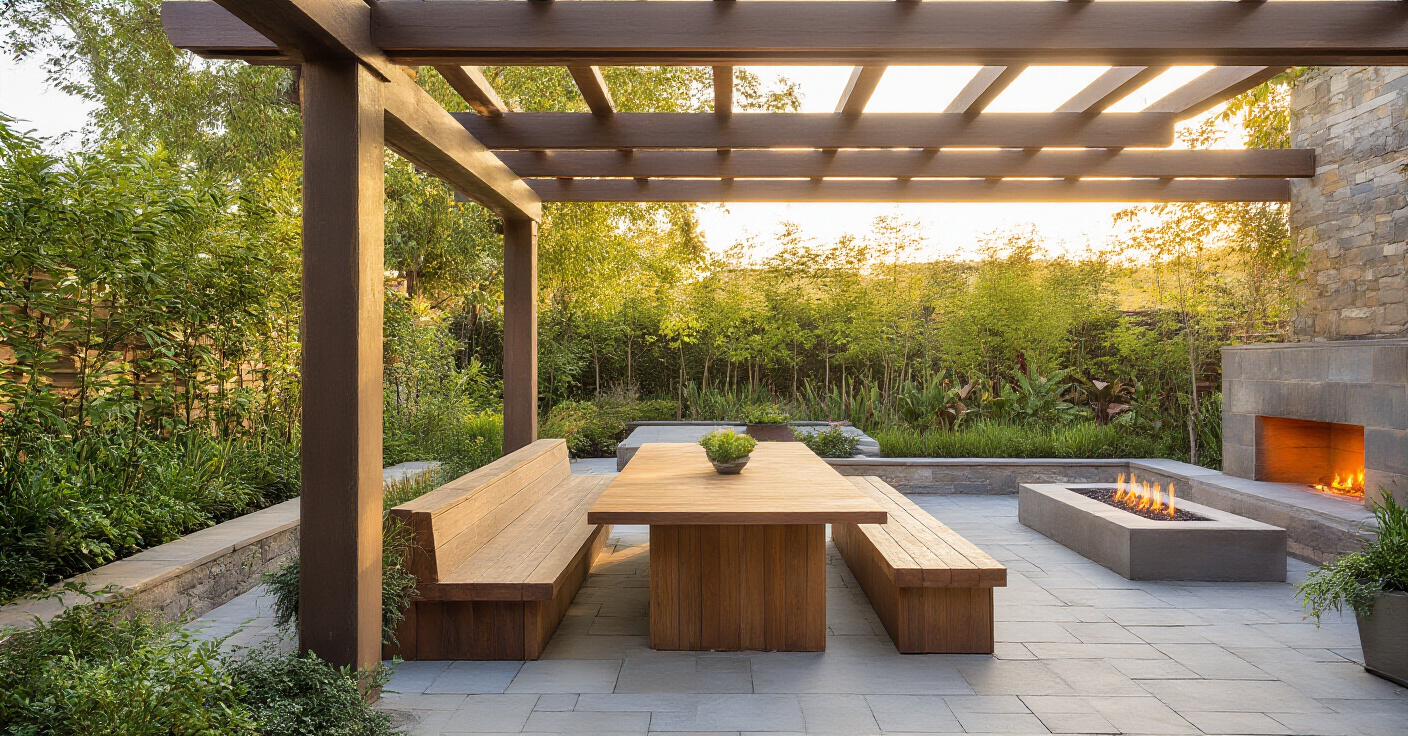
Transform your backyard with 21 essential patio ideas from a luxury hotel designer. Learn how to plan, build, and style an outdoor space that feels like a five-star resort.
Picture this: You’re at that incredible boutique hotel in St. Barts. The sun has just set, you have a chilled glass of rosé in your hand, and you’re sinking into a deep, comfortable sofa on a private terrace. The lighting is perfect—a soft, warm glow that makes everything look beautiful. You’re surrounded by the gentle sound of water and the rustle of palms. You think to yourself, “This is true luxury. I wish I could feel like this at home.”
Well, you can. And it has very little to do with buying the most expensive furniture you can find. I’ve spent my career designing those exact hotel spaces, and the secret isn’t about extravagance; it’s about thoughtful intention. It’s about creating an experience. So, forget the noise online. Here’s what actually matters when you’re building your own private paradise.
This is the part everyone wants to skip, but it’s the absolute most important. In the luxury hotel world, we spend more time on the floor plan and the “why” of a space than we do picking out the final finishes. Get this right, and everything else falls into place beautifully. Get it wrong, and you’ll end up with a very expensive, very awkward slab of concrete you never use.
Before you look at a single piece of stone, ask yourself: What is the story of this space? What do I want to feel out here? Are you envisioning late-night conversations with your partner over a bottle of wine? Or is this the hub for epic weekend barbecues with twenty people? These are two entirely different designs. One requires intimacy and comfort; the other needs flow and function. Don’t try to be everything to everyone. Be specific.
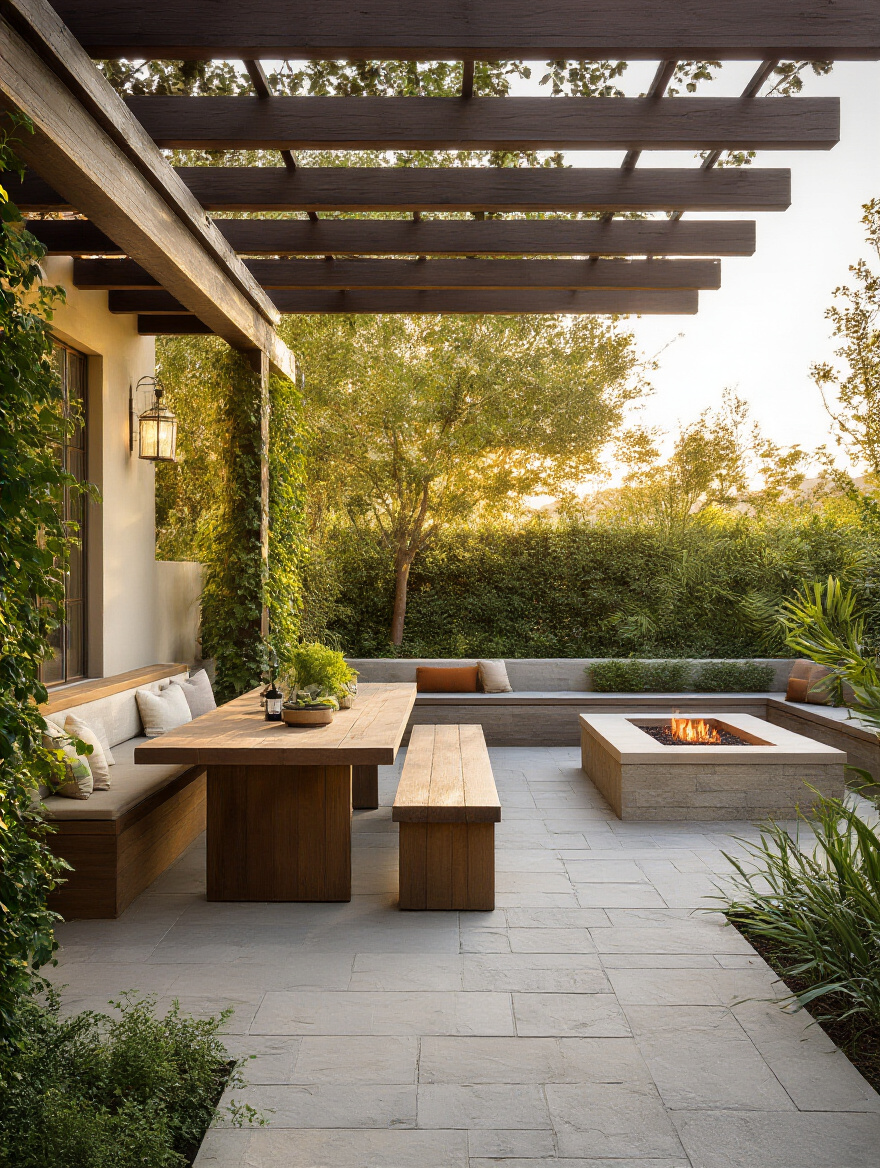 Pergola and a cozy Fire pit lounge during warm evening light.” class=”wp-image-10005″/>
Pergola and a cozy Fire pit lounge during warm evening light.” class=”wp-image-10005″/>I once worked with a client who wanted a “multi-purpose entertaining space.” That’s just noise. When we dug deeper, what she really craved was a serene morning coffee spot and a chic outdoor cocktail lounge. By focusing on those two moments, we created a stunning, zoned patio that felt personal and sophisticated, rather than a generic, oversized space that would have felt empty most of the time. The shortcut is to think in scenes, not functions. Design for the moments you want to create.
Can we talk about my biggest pet peeve? It’s a gorgeous, expensive patio that’s completely unusable because it’s baking in the afternoon sun or feels like a wind tunnel. Hotels obsess over this. We do sun and shadow studies for every season to determine where to place seating, shade, and even planters. You should, too. Watch where the sun falls in the morning, at noon, and in the late afternoon. Notice where the wind comes from.
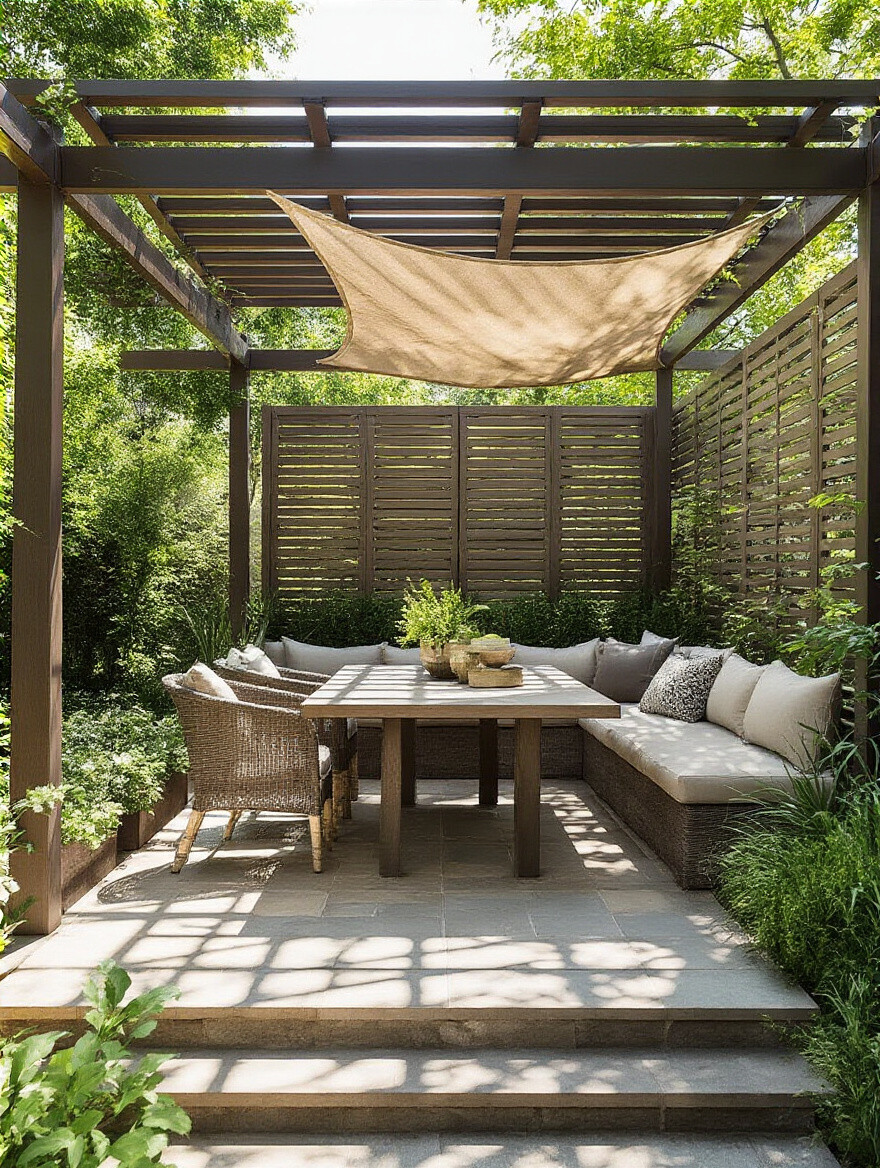
This isn’t just about comfort; it’s about maximizing your investment. If you build a beautiful dining area that gets blasted with 4 p.m. sun, you will never, ever eat there. A simple observation will tell you that’s where the automated awning or a strategically planted tree needs to go. Don’t fight nature. Design with it. That’s the definition of sophisticated design.
You wouldn’t design your indoor living room without thinking about how people walk through it, right? Your patio is no different. You need clear, intuitive pathways. We call this circulation. The goal is to move from the house to the grill, to the dining table, to the lounge area without bumping into furniture or weaving through an obstacle course. There should be a natural, gracious flow.
My insider tip? Grab a garden hose or some string and lay out your “walls” and furniture on the lawn before you build. Walk the space. Pretend you’re carrying a tray of drinks from the kitchen to the seating area. Does it feel easy and elegant, or clumsy and cramped? You’ll learn more in five minutes of doing this than in five hours of staring at a drawing. Fix the flow now, not when it’s set in stone.
Let’s be honest, this is the least glamorous part, but ignoring it is the fastest way to disaster. Luxury isn’t about having an unlimited budget; it’s about allocating a realistic budget intelligently. A number in your head is not a budget. A spreadsheet with line items for demolition, site prep, materials, labor, furniture, lighting, and a contingency fund—that’s a budget.
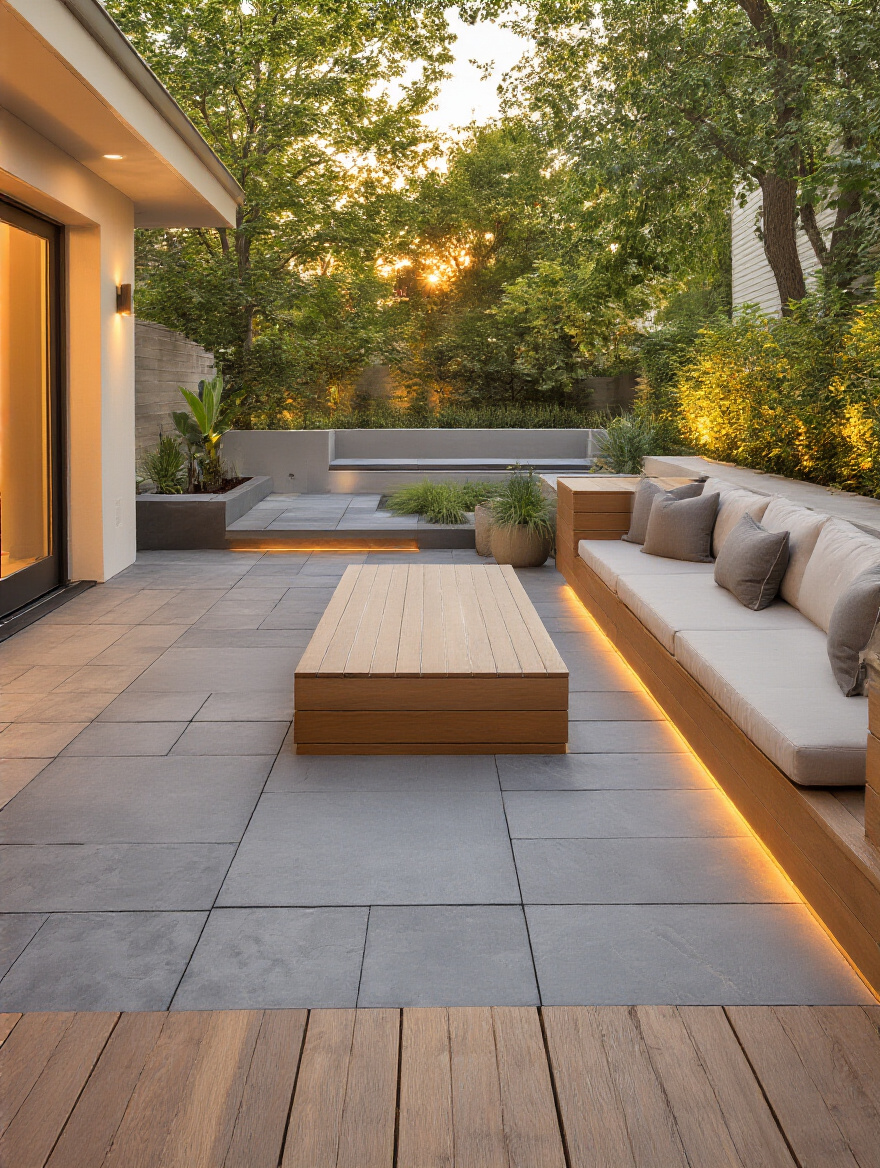
And please, please, include a 15-20% contingency. I’ve watched clients lose tens of thousands because unexpected drainage issues popped up, and they’d already maxed out their budget on the high-end grill. A contingency fund is what separates a professional project from an amateur nightmare. It’s your safety net. Use it. It’s the difference between a project that flows beautifully and one that stalls in a panic.
Nothing stops a project faster—and creates more miserable, expensive headaches—than a Stop Work Order from the city. I know it’s tedious, but checking your local codes and permit requirements before you do anything else is non-negotiable. Don’t assume a simple patio is exempt. Rules about lot coverage, impervious surfaces (things that don’t absorb water), and setbacks from property lines are surprisingly strict in many places.
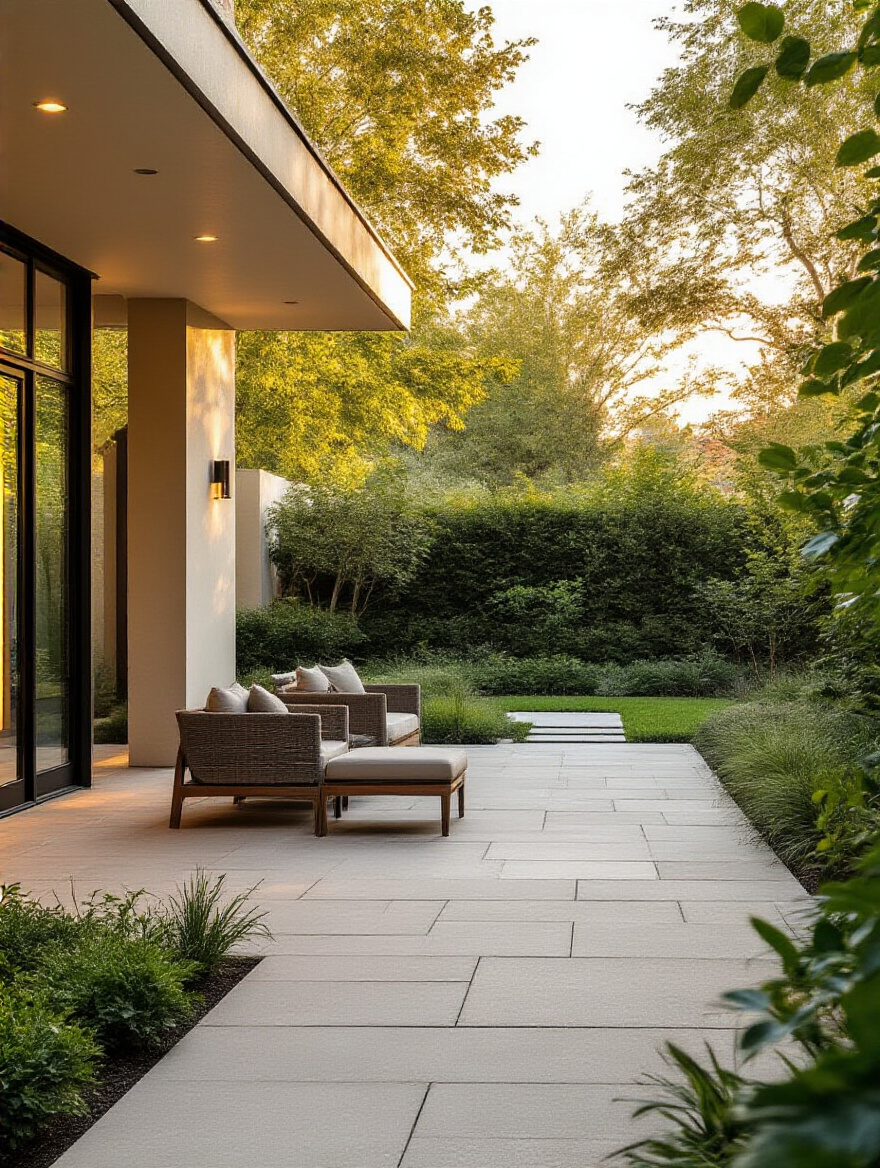
A former client tried to build a “simple” raised patio and fire pit without a permit to save time. His neighbor called the city, and he was fined and forced to tear out half the work because it was too close to the property line. The shortcut you think you’re taking by skipping this step will almost always turn into the longest, most expensive detour. Make the phone call. It’s worth it.
Now that we’ve handled the unsexy but critical planning, we can get to the good stuff—the materials and structures that bring the vision to life. This is where you truly start to build your resort.
The surface of your patio is the stage for everything else. It sets the entire aesthetic and sensory tone. Do you want the rustic, old-world feel of reclaimed cobblestone, or the sleek, seamless look of large-format porcelain pavers? The common BS is that you should just pick what looks pretty. The reality is that your climate is the boss. A porous stone that’s perfect for a dry climate will crack and flake after one winter in a freeze-thaw cycle.
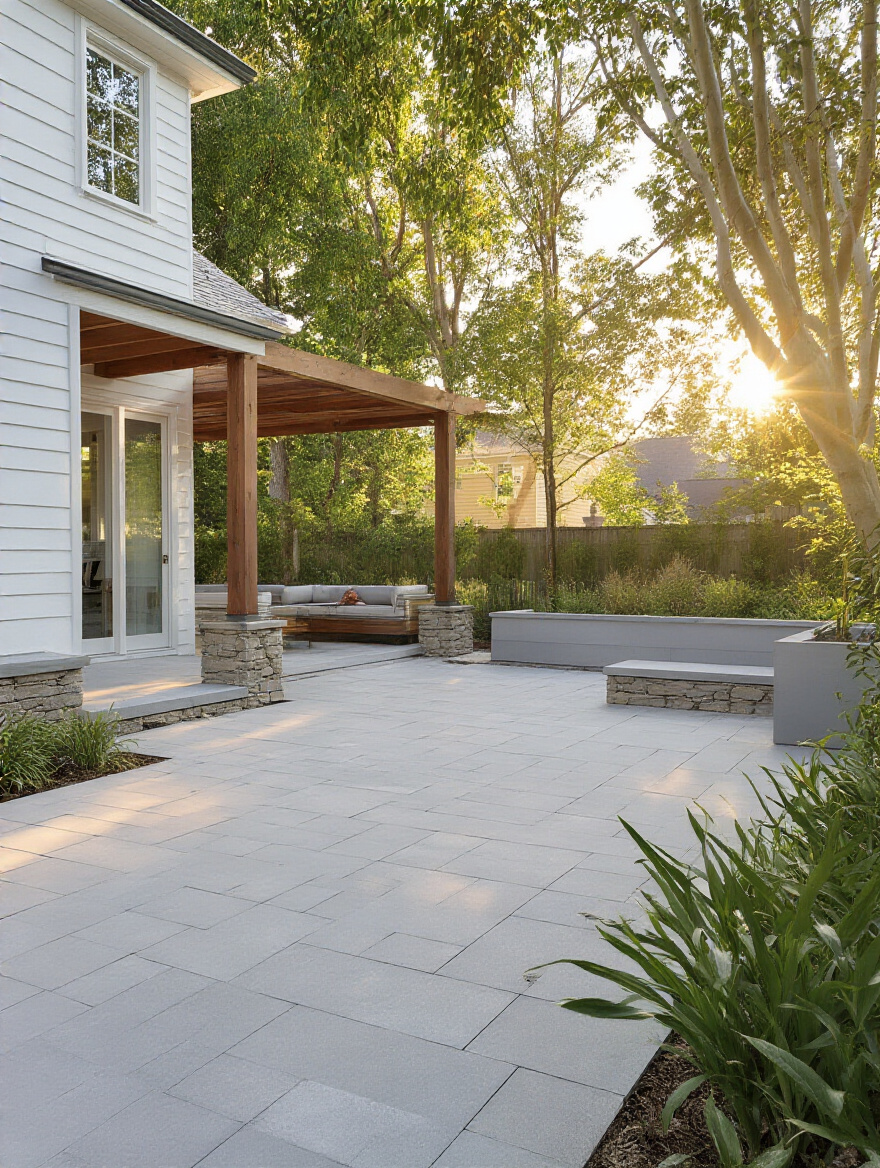
Here’s the hospitality secret: we choose materials for how they feel. Think about the feeling of cool, smooth limestone under bare feet—that’s a detail that telegraphs luxury. I love using natural stone like bluestone or travertine for high-end residential projects because it has a timeless elegance. For a more modern look, porcelain pavers are incredible—they are unbelievably durable and offer a clean, consistent look that’s hard to beat. Just make sure what you choose harmonizes with your home’s architecture, not fights it.
Okay, confession time. I used to think drainage was the contractor’s problem. Then I saw a multi-million dollar hotel terrace I designed have to be completely redone because water was pooling and seeping into the structure below. A seven-figure mistake. Now, I’m obsessed with it. Water is the enemy of every beautiful structure. Your patio must have a subtle slope—a minimum of a quarter-inch drop for every foot—to guide water away from your house.
This isn’t something you can eyeball. It has to be engineered. Depending on your soil and site, you might also need a French drain or other subsurface system. Don’t let anyone tell you it’s not necessary. I’d rather a client spend money on proper grading and a high-tech drainage system they’ll never see than on a fancy fire pit for a patio that’s going to turn into a swamp.
If your property has any kind of slope, a retaining wall isn’t just a solution; it’s an opportunity. Most people see them as purely functional—a way to hold back dirt. I see them as a design feature. A beautifully executed retaining wall can create stunning, usable tiers where there was once just a useless hill. It adds architectural interest and drama.
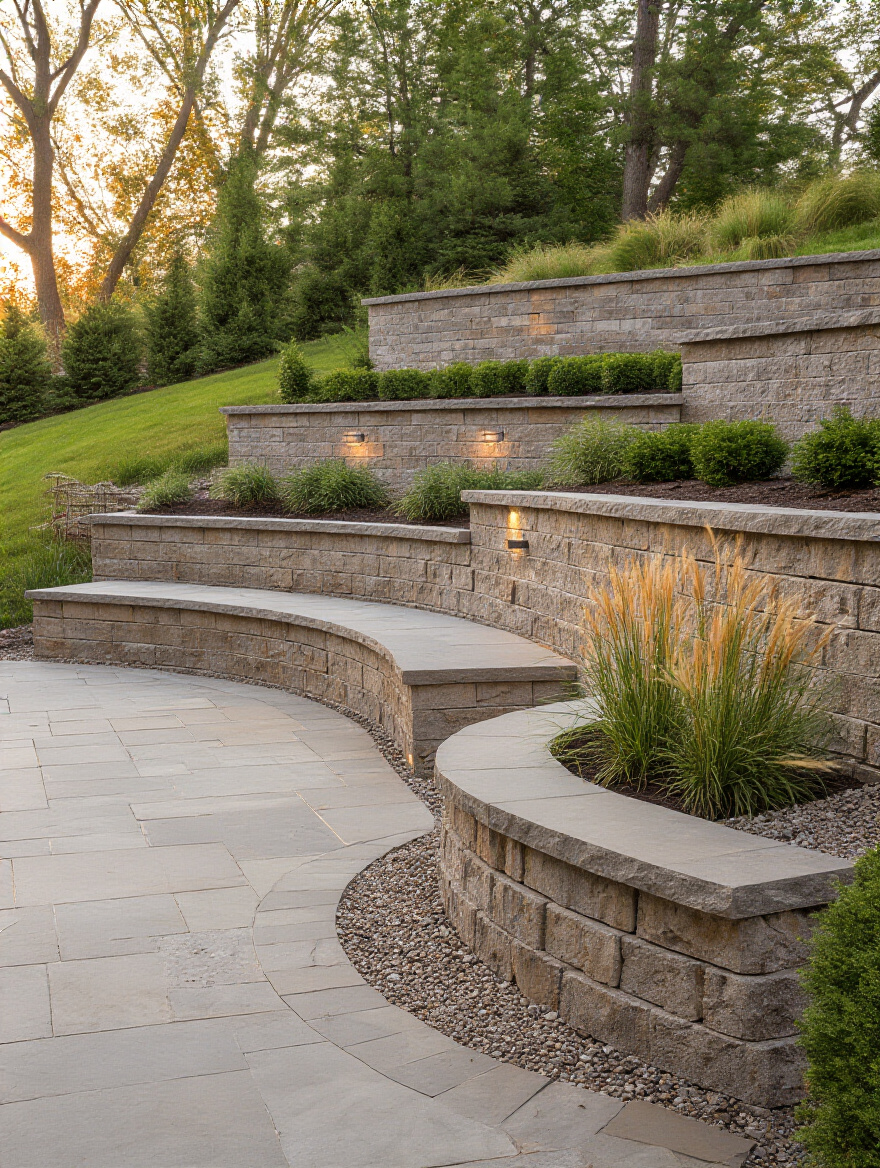
Instead of one massive, imposing wall, think about a series of shorter, staggered walls. This feels more natural and organic, and it gives you pockets to tuck in beautiful plantings, Integrated Lighting, or even a built-in bench. One of my favorite projects involved turning a steep, unusable backyard into a three-tiered paradise: a dining terrace on top, a fire pit lounge in the middle, and a small, quiet garden at the bottom, all connected by softly lit stone steps. The walls made the entire design possible.
This is the most “insider” tip I can give you, because it’s completely invisible but is the key to your patio lasting for decades. What your pavers or stones sit on is far more important than the pavers themselves. A proper base of compacted, angular aggregate (crushed stone, not rounded river rock) is what prevents sinking, shifting, and heaving. A poorly done base is why you see patios that look like a roller coaster after just a few years.
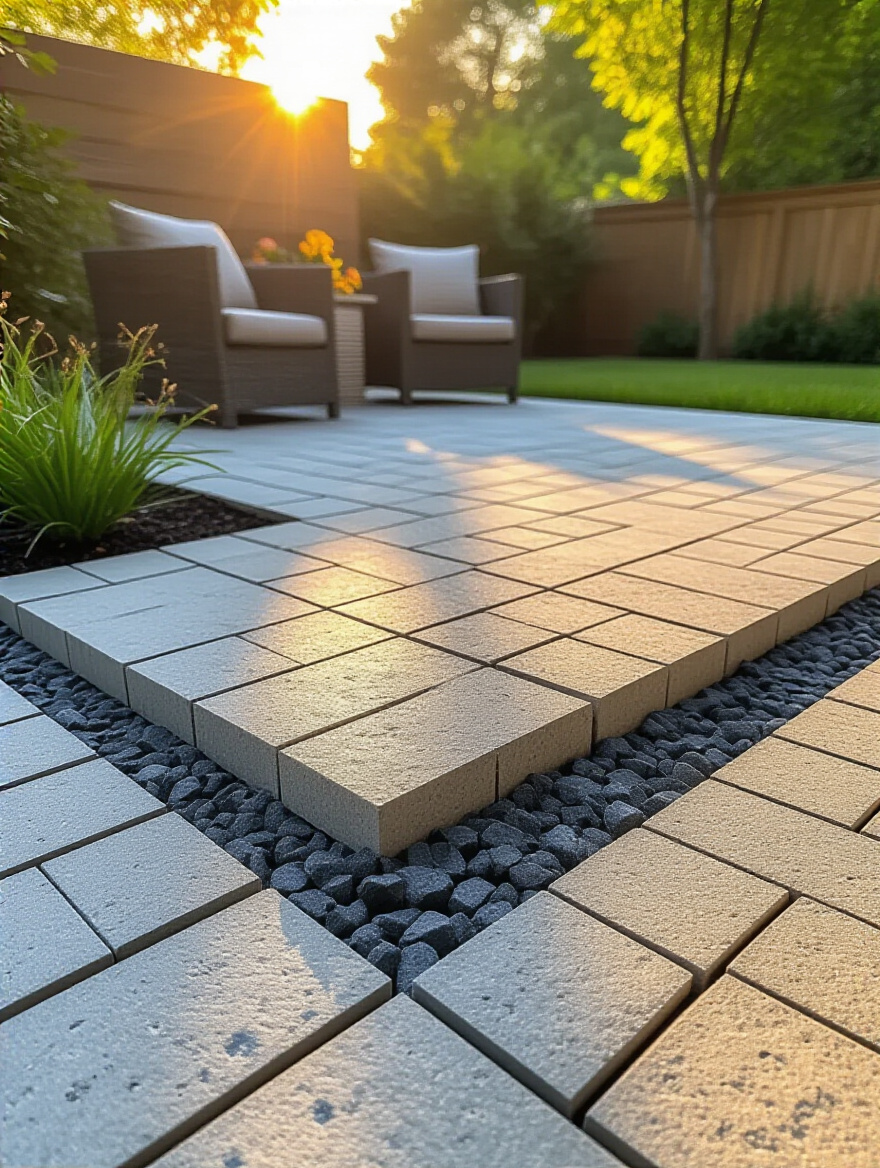
Ask your contractor about their base prep process. They should be talking about digging down at least 6-8 inches, using a geotextile fabric to separate soil from stone, and compacting the aggregate in multiple layers with a heavy-duty plate compactor. If they just say they’re throwing down some sand and gravel, run. This is the difference between a 5-year patio and a 50-year patio. End of story.
With the heavy lifting done, we can move into the elements that make your patio a place you want to live, relax, and entertain. This is where we layer in the comfort and soul.
Here’s where everyone gets it wrong. They see a gorgeous outdoor sofa in a catalog and buy it, only to have the cushions turn into mildewed, flattened sponges and the frame rust after one season. True outdoor luxury furniture isn’t about the initial look; it’s about the performance materials. You need to be looking for powder-coated aluminum or marine-grade polymer frames. For fabrics, the gold standard is solution-dyed acrylic, like Sunbrella. The color is part of the fiber itself, not just printed on top, so it simply doesn’t fade.
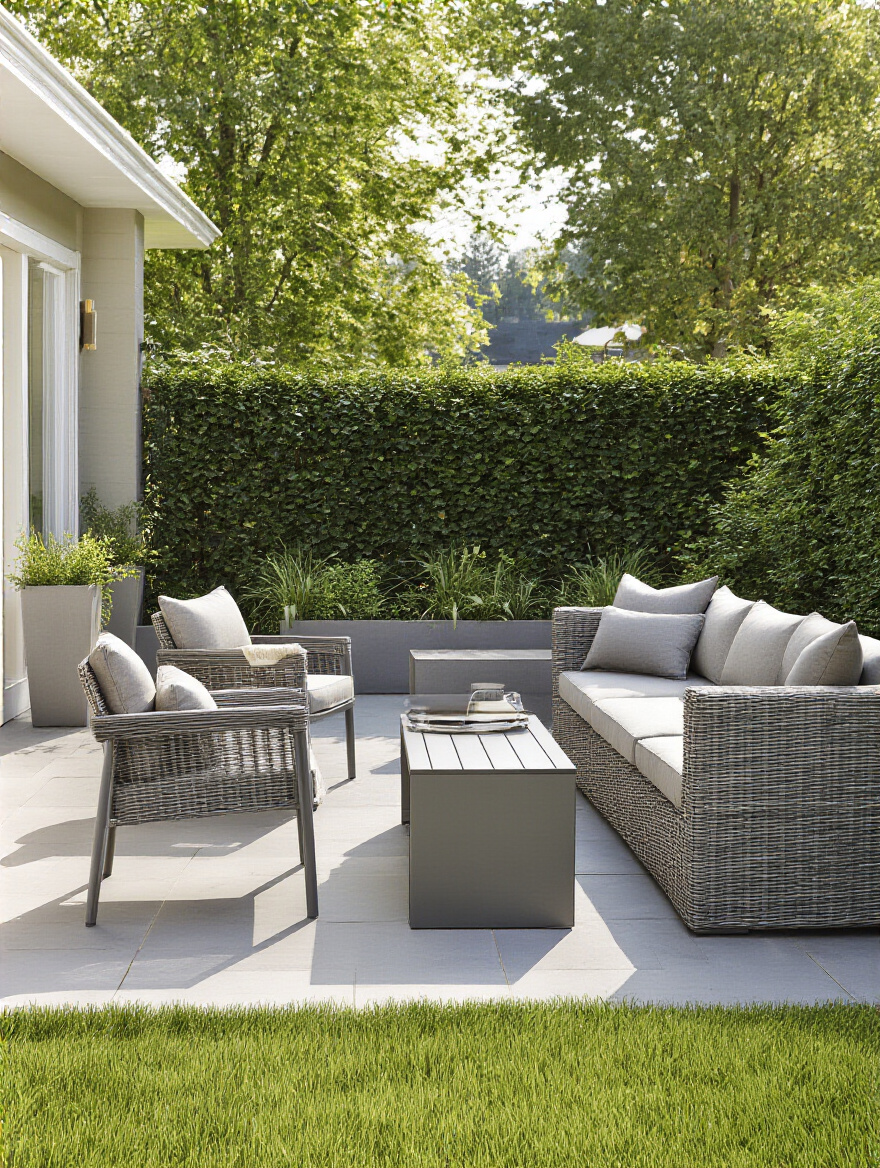
And think about the interior of the cushions! They should be made with quick-dry foam that allows water to pass straight through. This is the kind of detail that separates high-end hospitality furniture from residential retail. It means you can actually leave your furniture out in a rain shower and it will be dry and ready to use in a remarkably short time. That convenience is luxury.
Shade is not an accessory; it is a necessity. A beautiful patio without shade is just a hot slab you can only use for a few hours in the morning and evening. A well-designed shade structure, like a pergola or a high-quality retractable awning, is what turns your patio into a true outdoor room that can be enjoyed all day long. It defines the space and provides critical relief from the sun.
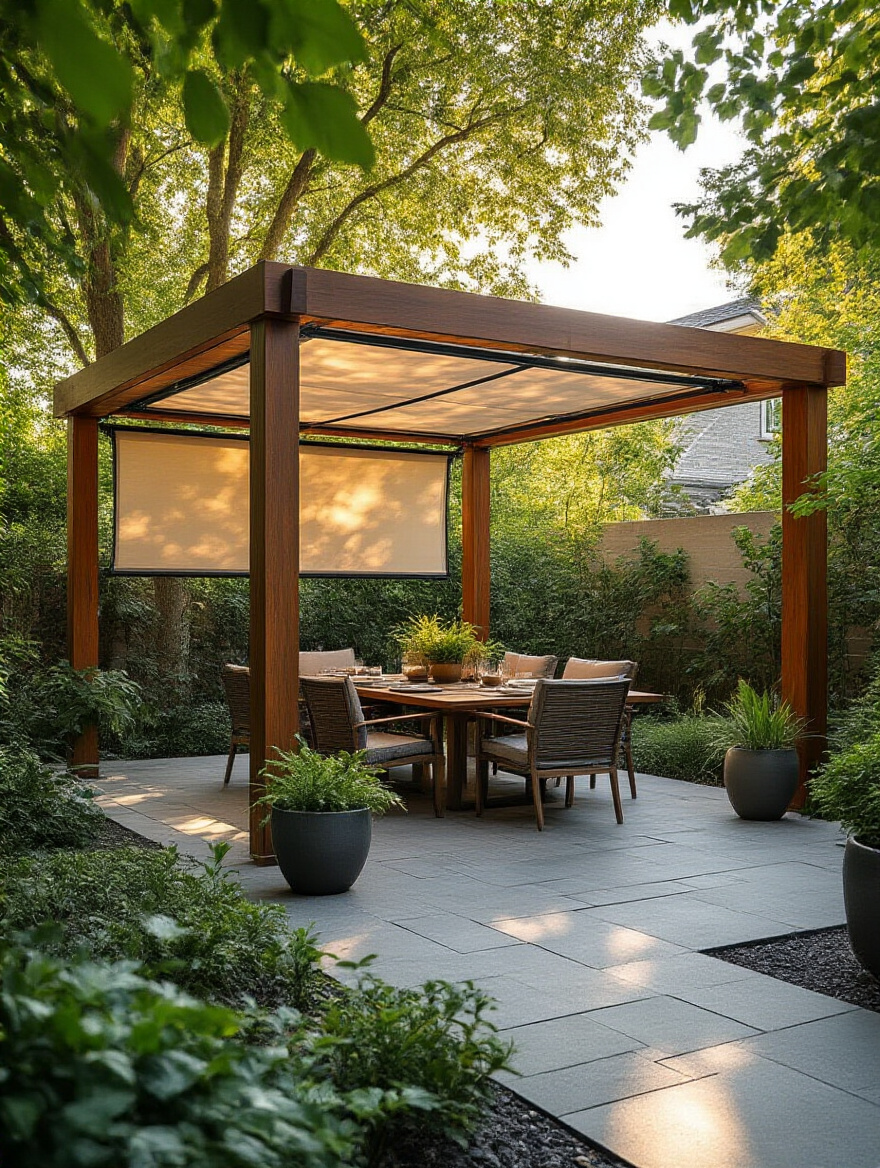
For a modern, high-end feel, I absolutely love automated louvered pergolas. You can adjust the slats with a remote control to allow full sun, partial shade, or close them completely to create a waterproof roof during a surprise summer shower. It’s an incredible piece of engineering that offers ultimate flexibility. It allows you to control the environment, which is the ultimate luxury.
Nothing ruins a sophisticated vibe faster than a bright orange extension cord snaking across your beautiful stone patio. It’s a design crime. Planning for integrated, weatherproof power outlets from the very beginning is a non-negotiable for any high-end outdoor space. You need them for lighting, for speakers, for charging a laptop if you want to work outside, or for a blender if you’re making margaritas.
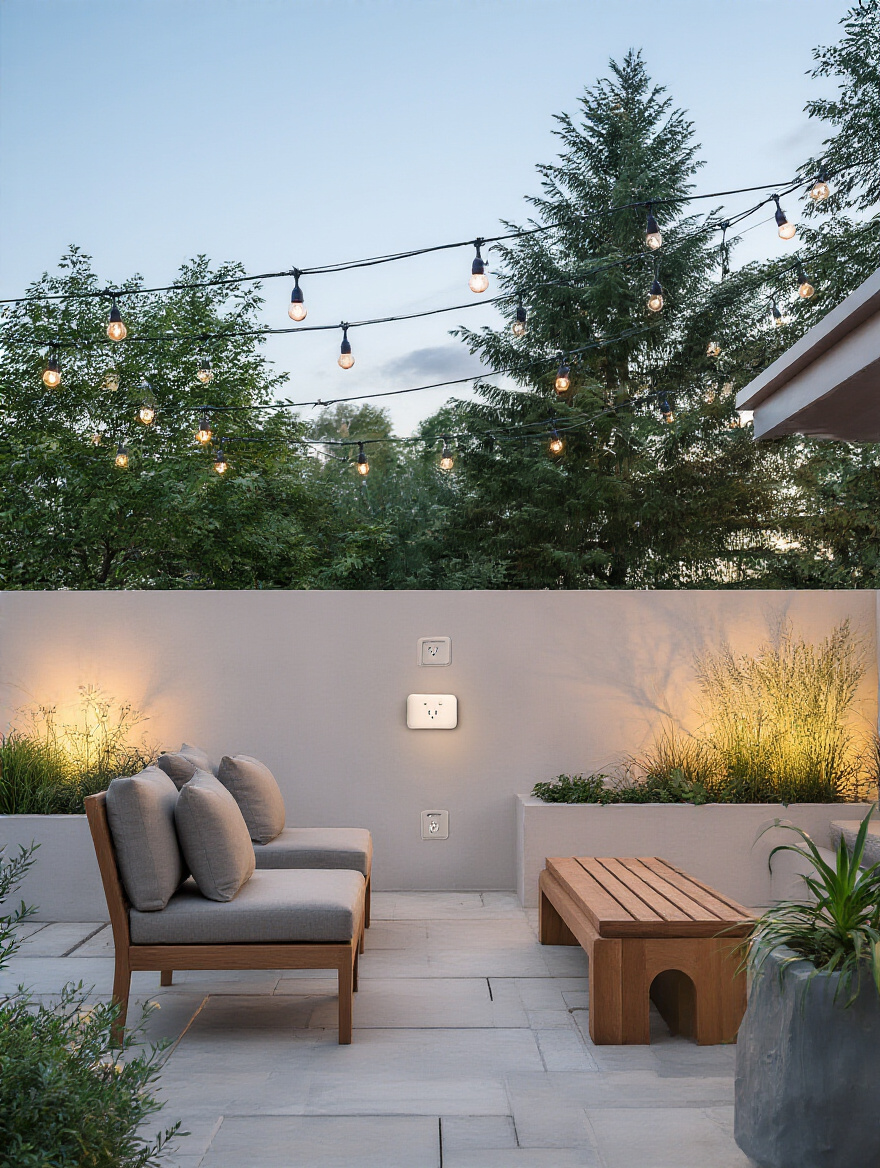
Work with your electrician to strategically place outlets where you’ll actually need them—discreetly located near seating areas, in a dining zone, or by a bar or grill station. Make sure they have “in-use” covers, which are the bubble-like covers that protect the plug even when something is plugged into it. It’s a small detail that makes a massive difference in both safety and convenience.
Just as your home has a dedicated dining room or area, your patio should too. Don’t just throw a table and chairs in a corner. Create an intentional destination for dining. This zone should be conveniently located near the kitchen door for easy transport of food and dishes. It needs its own dedicated lighting—a beautiful outdoor chandelier or string lights hung overhead creates a magical canopy of light.
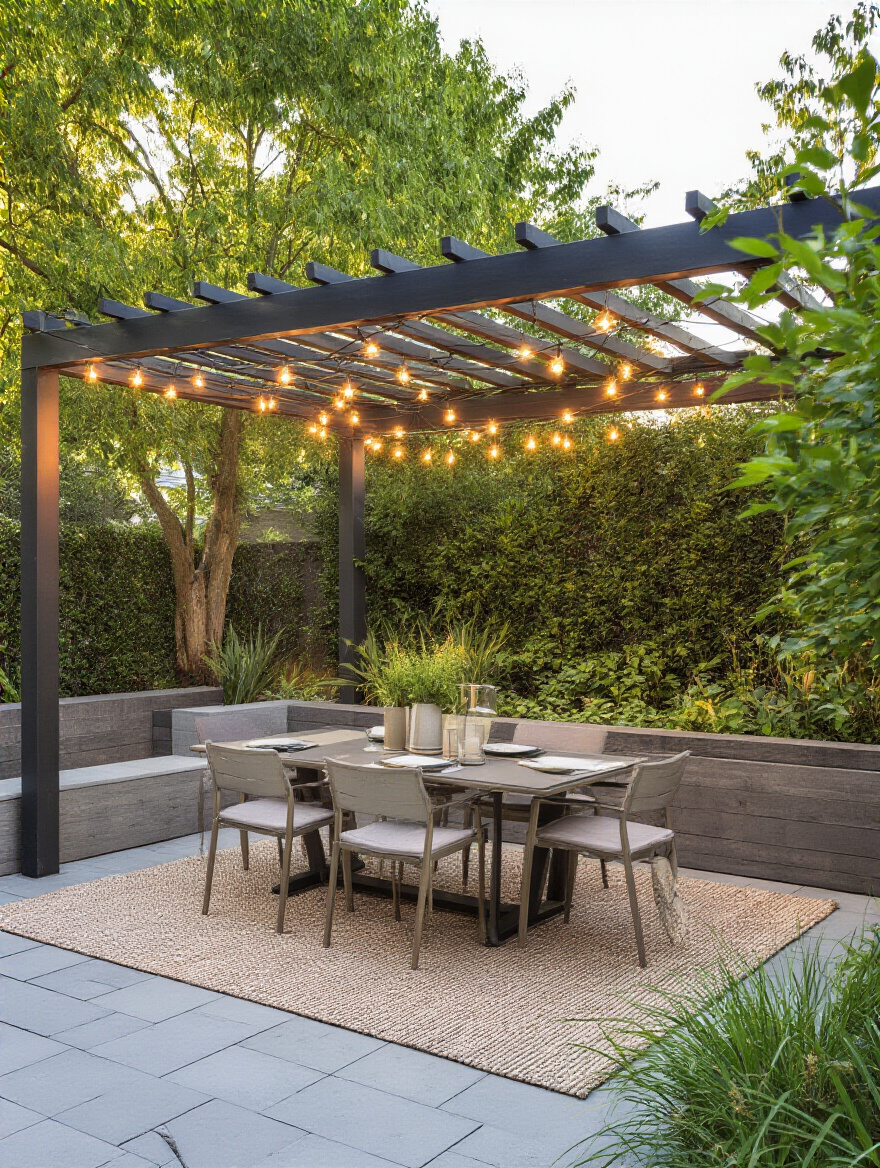
To really elevate it, define the space on the ground. You can do this with a beautiful outdoor rug, or even by using a different paving pattern, like an inlay of herringbone brick within a field of bluestone. These subtle cues create a “room without walls” and make the act of dining outdoors feel like a special, curated experience rather than a casual afterthought.
Every single five-star resort I’ve ever worked on has a water feature. Why? Because the sound of moving water is a primal trigger for relaxation. It instantly lowers your stress level and, just as importantly, it masks unwanted noise like traffic or chatty neighbors. It doesn’t have to be a giant, ornate fountain. A simple, modern disappearing fountain where water bubbles up from a bed of river rocks and vanishes can be incredibly chic and effective.
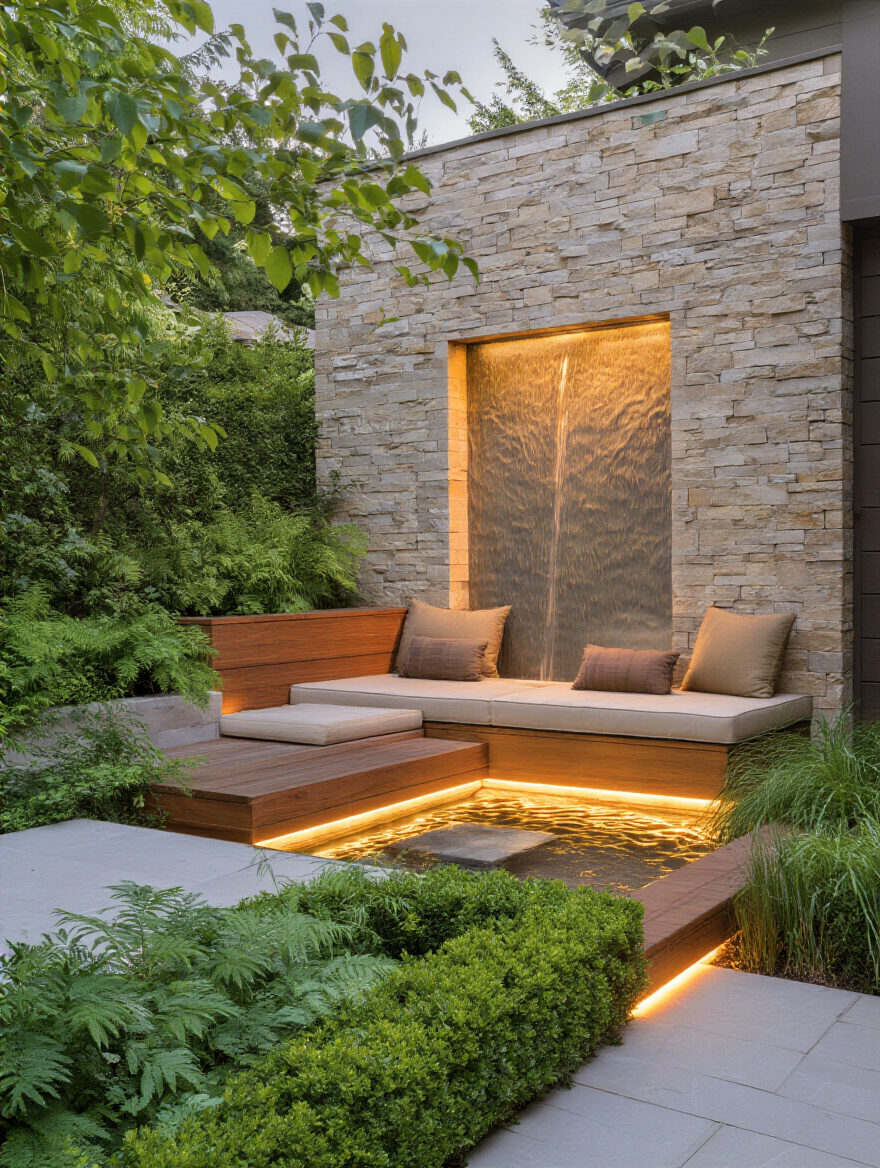
The key is placement. Position your water feature where you’ll hear it from your main lounging area. We once placed a simple wall-mounted scupper fountain on a small city patio just outside the client’s home office doors. He said the gentle sound transformed his work-from-home experience, providing a constant, calming background score to his day. That’s the power of sound.
Now for my favorite part—the layers of ambiance. This is the lighting, the greenery, and the decor that infuse personality and make the space feel truly magical after the sun goes down.
I’m going to give you the single most valuable secret from the world of luxury design: a layered lighting plan. Never, ever rely on one harsh overhead light. It’s unflattering and kills all atmosphere. You need multiple sources of light at different levels to create depth, drama, and intimacy. This means a combination of path lights for safety, uplights on beautiful trees for drama, string lights or a pendant for overhead ambiance, and step lights for navigation.
And here’s the pro shortcut: pay attention to color temperature. That harsh, blue-white light you see everywhere is a mood-killer. You want a warm, inviting glow. Look for LED bulbs rated at 2700K. It’s the magic number. It mimics the warmth of candlelight and the golden hour, and it makes everyone and everything look better. Dimmer switches on everything are also a must. You should be able to dial the mood up or down instantly.
A patio without plants is just a hard, sterile surface. Greenery is what brings your space to life. It softens the hard edges of stone and wood and connects your patio to the wider landscape. For a sophisticated, hotel-like feel, think in groupings and scale. Instead of a dozen tiny, random pots, invest in three to five large, sculptural planters and group them together for a dramatic statement.
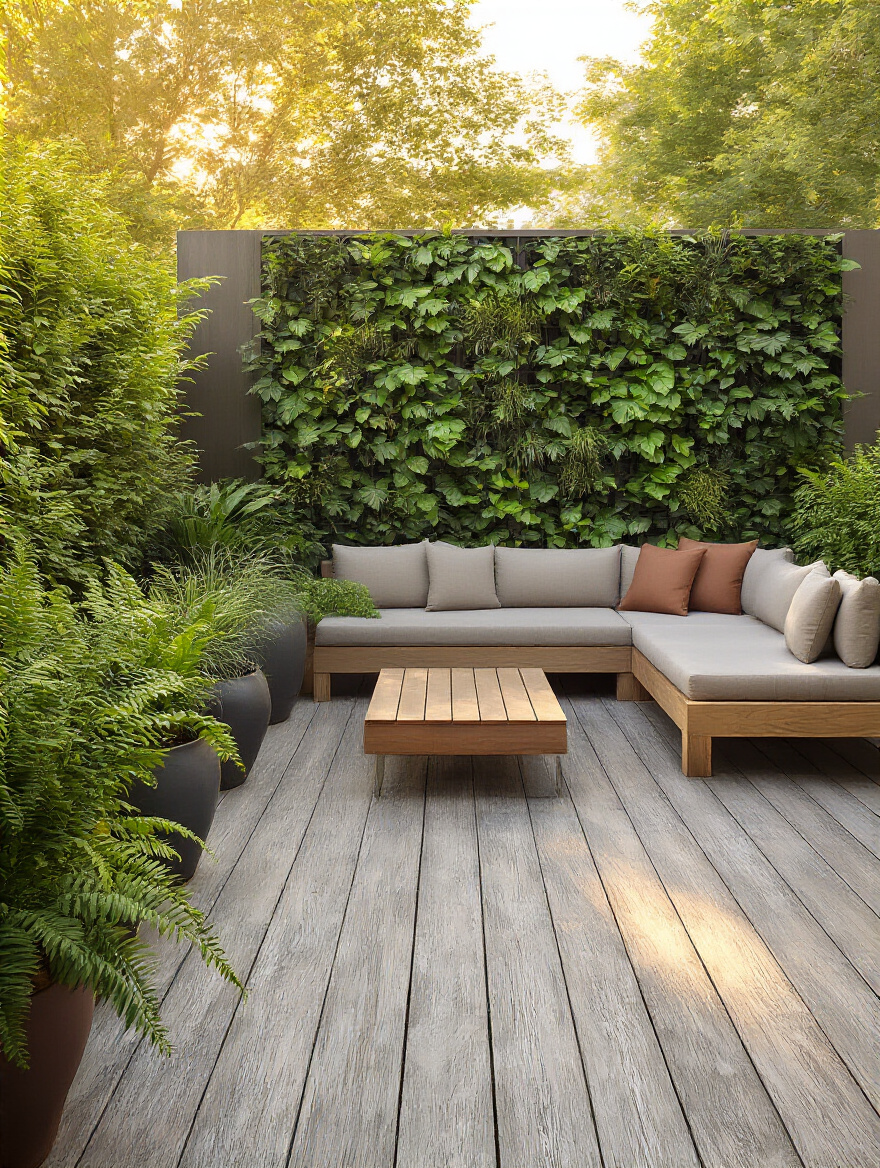
And if you’re tight on space, go vertical. A living wall is an incredible feature that provides a lush, green backdrop without taking up any floor space. You can use them to grow herbs for your outdoor kitchen or just create a beautiful tapestry of textures. It turns a boring wall into a piece of living art.
This is how you make the space feel like you. A high-quality outdoor rug is the first step; it grounds the seating area and defines it as a distinct room. It makes everything feel cozier and more finished. Then, layer in pillows and throws. This is your chance to play with color and pattern. Just be sure they are made from outdoor-performance fabrics so they don’t fade or mildew.
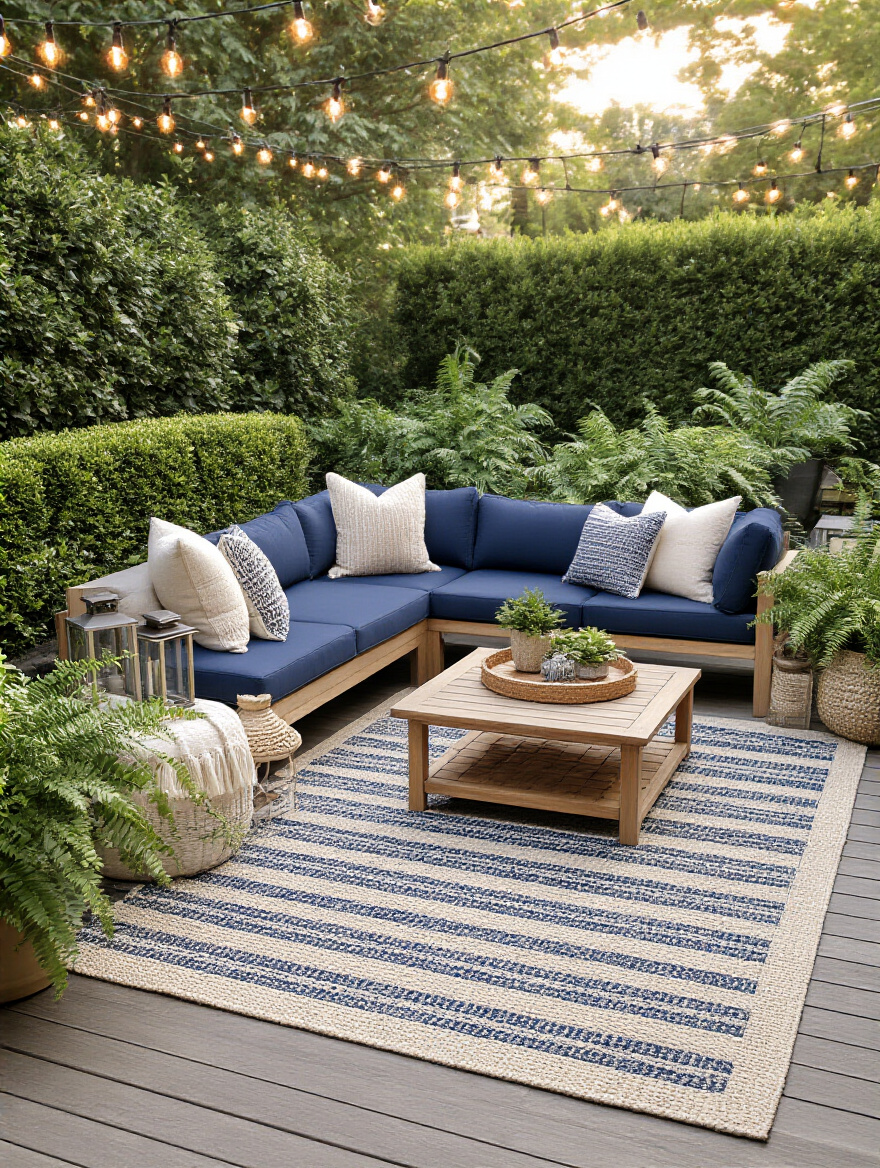
Don’t be afraid to bring in other decorative elements, but be selective. A few beautiful lanterns, a piece of sculpture, or a stylish serving tray on the coffee table is all you need. The rule in luxury design is curation, not collection. The goal is to look like an effortlessly chic outdoor living room, not a cluttered porch.
A fire feature is elemental. It’s mesmerizing. People are instinctively drawn to it. It provides warmth, light, and a natural centerpiece that encourages conversation. It fundamentally changes how and when you use your patio, easily extending your season by a month or two on either end. I’ve seen patios go from being used a few times a summer to almost nightly once a fire pit was installed.
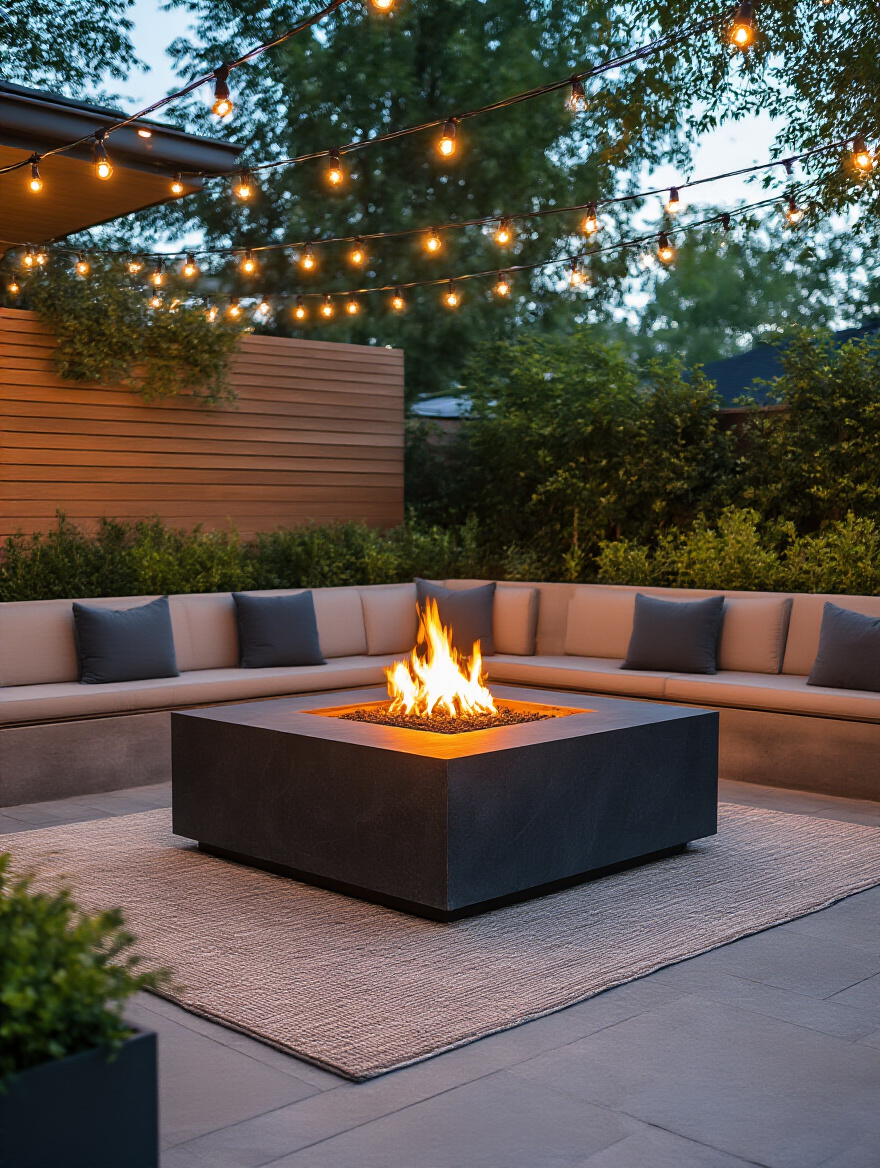
The big debate is wood versus gas. Wood is primal and smells incredible, but it’s smoky and messy. Gas is clean, convenient, and instant-on. For most of my residential clients, I recommend a gas fire table. It provides the ambiance without any of the work, and the tabletop surround gives you a place to set down a drink. It’s the perfect combination of function and beauty.
Ready for the final layer? These are the features that take your patio from merely luxurious to truly next-level, fully integrated living space.
An outdoor kitchen isn’t just about having a grill. It’s about changing the entire dynamic of how you entertain. It brings the host out of the indoor kitchen and into the heart of the party. Suddenly, you’re not running back and forth; you’re part of the conversation, mixing drinks and searing steaks while chatting with your guests. It’s a game-changer.
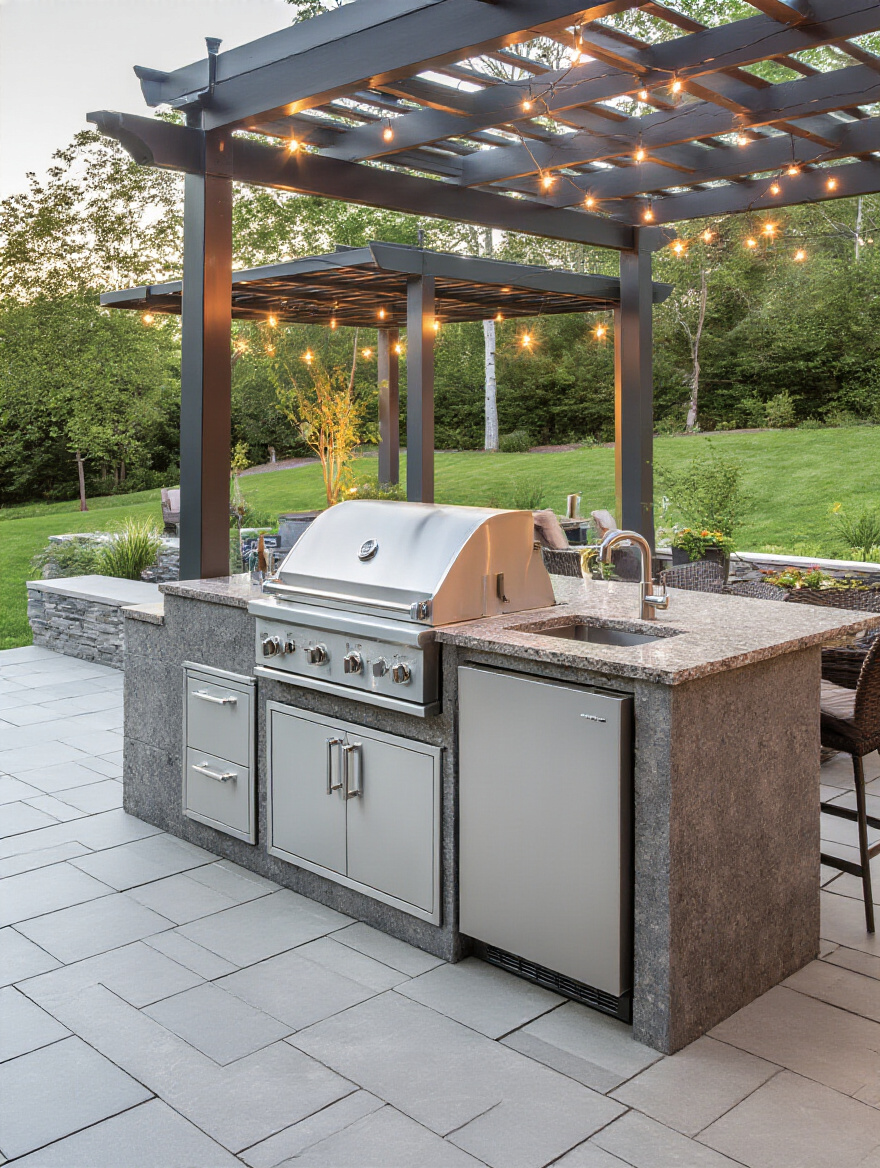
To do it right, think beyond the grill. The essential trio for a truly functional outdoor kitchen is a high-quality grill, an outdoor-rated refrigerator, and a sink. That gives you a place for cold drinks, food prep, and cleanup. If you have the space and budget, adding elements like a pizza oven or dedicated bar with seating can turn your patio into the ultimate entertainment destination.
This is where hospitality-level convenience meets residential design. Imagine pressing one button on your phone labeled “Entertain” that slowly brings up your landscape lights to 70%, turns on the fire pit, and starts playing your favorite “cocktail hour” playlist through discreet, high-quality outdoor speakers. That’s the power of smart home integration.
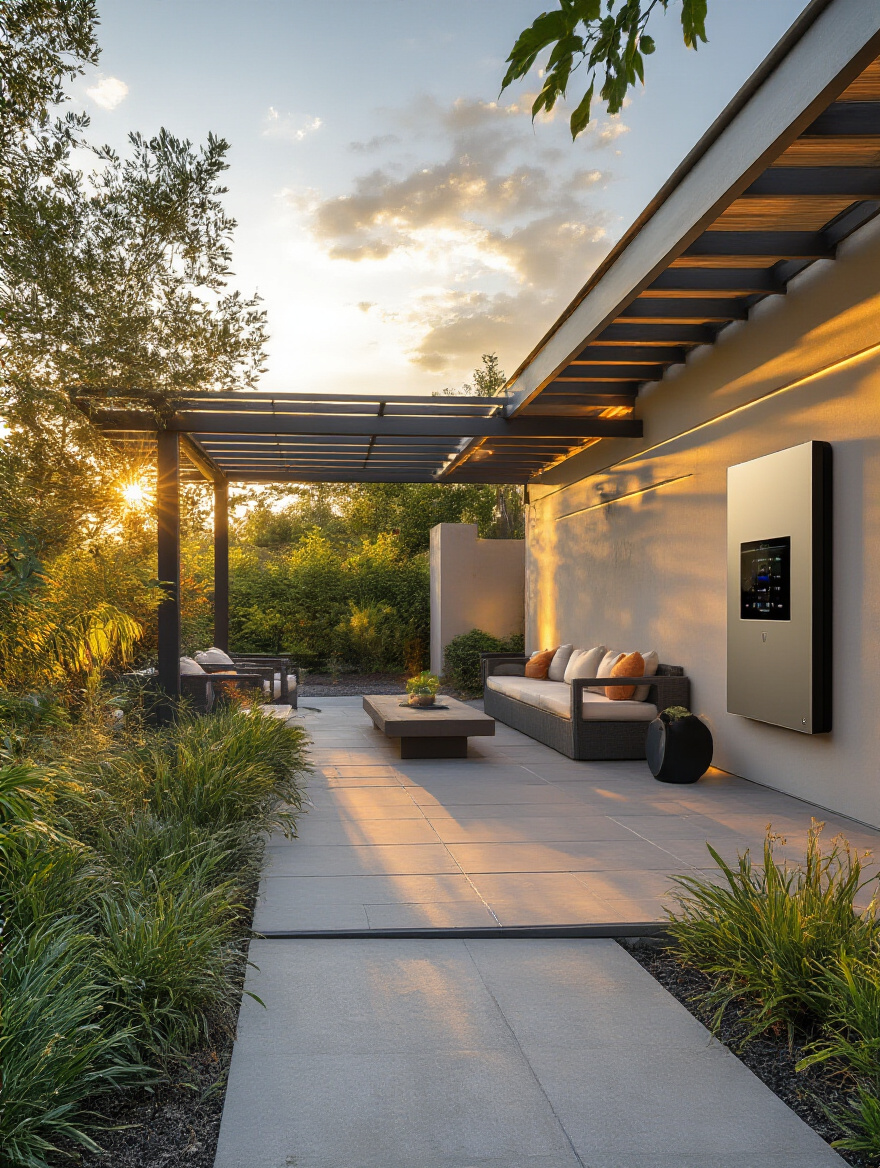
It’s the ultimate in effortless ambiance. You can create scenes for different moods—”Dinner Party,” “Relaxing Evening,” “Late Night”—and execute them with a simple voice command or tap of a screen. We build this into every modern hotel, and bringing it home is easier and more affordable than ever. It’s a layer of control that makes a huge difference in how sophisticated your space feels and functions.
Finally, true luxury is about privacy. It’s the feeling of being in your own secluded world, even if your neighbors are just a few feet away. You can achieve this with structural elements or with living ones. A modern horizontal slat screen made of ipe or cedar can provide an architectural backdrop while blocking a specific view. Laser-cut metal panels can act as artistic focal points that also screen.
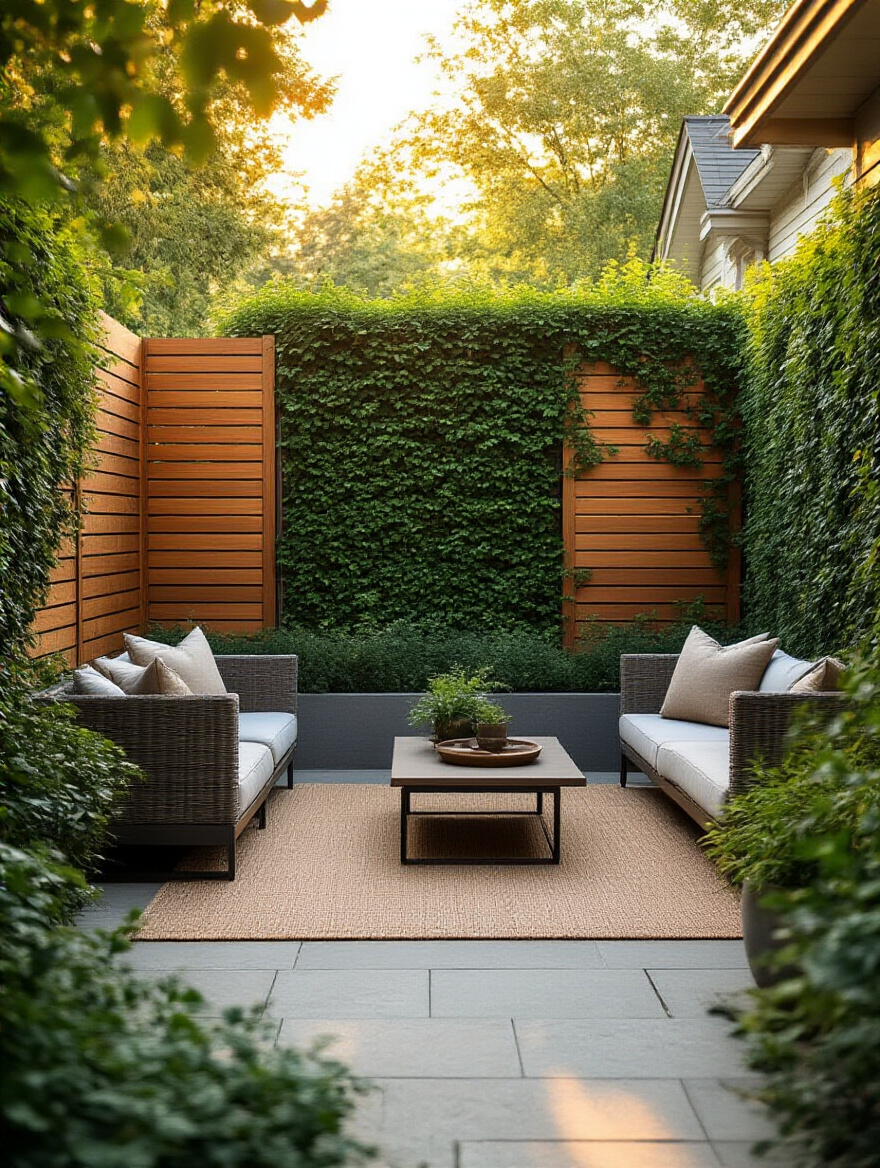
My personal preference is to create “living walls” with lush plantings. A hedge of elegant Hornbeam trees or a row of tall, graceful grasses can create a soft, beautiful barrier that also adds texture and movement. The key is to layer. Combining a structural fence with a row of trees in front of it creates a deeper, more effective, and far more beautiful privacy screen than a single flat wall ever could.
So, there you have it. The real secret to a resort-worthy patio isn’t a single purchase; it’s a series of deliberate choices. It’s about building a solid, intelligent foundation and then layering in comfort, ambiance, and personal style. It’s about designing for the way you want to live and the feelings you want to evoke. Your patio shouldn’t be an afterthought; it should be the most beautiful and relaxing room of your home, one without a ceiling.
Stop thinking of it as just an outdoor space. Start thinking of it as your private sanctuary, your personal five-star retreat. Take these ideas, start sketching, and dream big. Your perfect patio isn’t just possible—it’s waiting for you to create it. Let the transformation begin.